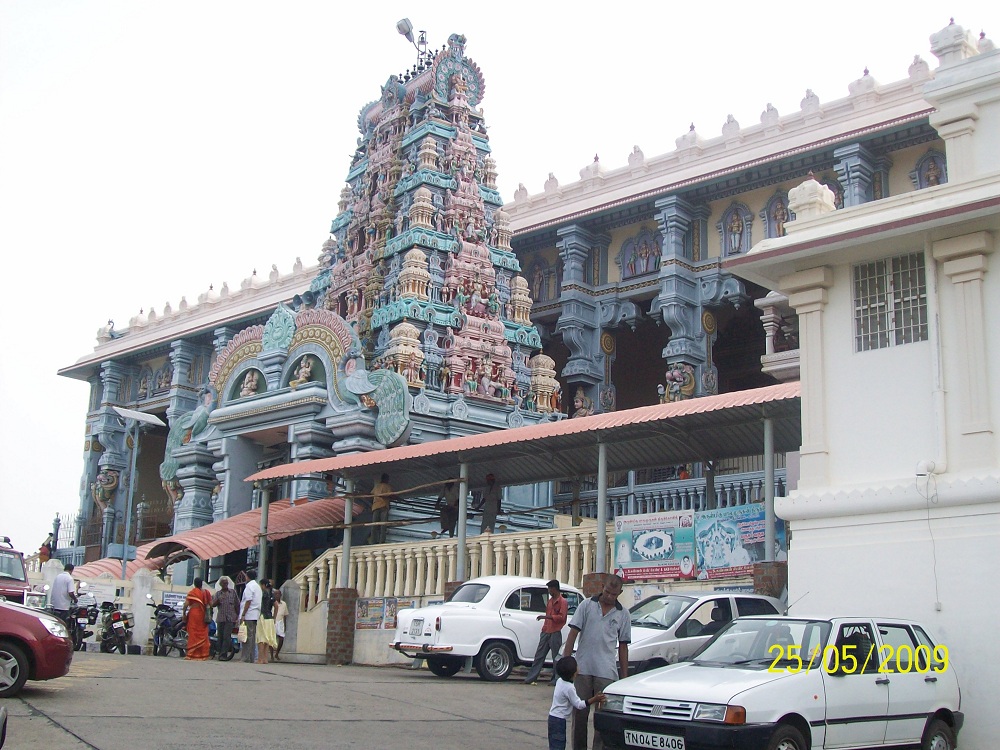Vellore - One Day
Vellore - One Day
To avail the below mentioned package please click
Sripuram Golden Temple
A grand 'golden temple', the Mahalakshmi temple, located on a sprawling 100 acres of land at Sripuram, near Vellore, has been constructed by Vellore-based Sri NarayaniPeetam, headed by spiritual leader Sri SakthiAmma. The temple, covering 55,000 sqft, has intricate carvings and sculptures in gold. Except for the pathway, the entire structure has been made of gold and copper.
About 400 goldsmiths and coppersmiths, including craftsmen from Tirumala-TirupatiDevasthanam, have completed the architectural marvel in gold in six years. The approximate cost of the temple was Rs 600 crores.Surrounded by mountains and lush and scenic beauty, the temple, entirely conceived and designed by 'Amma', is open to people of all religions. "The temple is Amma's gift to mankind". The pathway to the temple has been laid out in the shape of a star with messages of 'Amma' and quotes from Gita, Bible and Quran displayed on either side. It is one of the richest temples gifted to Tamil Nadu!
The construction of the temple was completed in seven years and was consecrated in August 2007. The consecration ceremony witnessed more than one lakh footfalls, which is considered a record given the normal visitors to this small town.The Sripuram Golden Temple holds the title of the largest golden temple in the world (Gold Coated Temple). The lighting system is designed to highlight the beauty of the temple and glitters even at night.


Vellore Fort
One of the oldest forts of India, the Vellore Fort has always played a pivotal role in determining the politics of not just Tamil Nadu but that of the entireIndia. Bommi and Thimma Reddy built this large fort in the 16th century during the reign of the Vijayanagar King Krishnadeva Raya. The fort was captured in the 17th century by the AdiShahis, the Muslim rulers from Bijapur. It was then taken by the Marathas, and later taken by Daud Khan of Delhi in the early 18th century. The British took control of this fort in 1768 and controlled it until Independence. After the British killed Tipu Sultan they imprisoned Tipu's son and daughter in this fort.
There is a big moat around the fort that is still filled with water. At one time it was full of crocodiles. The fort, which is well preserved, now contains the Jalakanteswara Temple, a church, a mosque, courts and a police training center. There is a Museum here that contains old sculptures, paintings and handicrafts. Open daily except Fri 8 am to 8 pm.
The modern CSI Church, opposite the fort, has an old British cemetery, which contains graves of British officers killed in the final campaign against Tipu Sultan.
Jalakanteswara Temple
This large, impressive Siva temple was built around 1566 in the Vijayanagar style. This ancient temple is named after Jalakanteswara, or "Lord Siva residing in the water." The temple has a Nataraja Siva deity on the northern altar, and on the western altar is a Siva-linga. This temple has just recently been reestablished as a place of worship.
The temple is famous for its magnificent sculptures. There is a 30m (100ft) high, seven-storey gopuram made of blue granite, which is flanked by two carved dwarpalas (door guards). The carvings in the kalyanmandapa (pillared hall) are some of the most impressive in India. The outer pillars have sculptures of rearing horses and dragons. The inner pillars have sculptures of yalis, which are lion-like creatures.
This temple is located in the Vellore Fort, near the north wall of the fort. Open daily 6 am to 1 pm and 3 to 8 pm.


Ratnagiri Murugan Temple
Ratnagiri Balamurugan Temple is an ancient Murugan temple situated in Vellore. It was built around the 14th century. It is situated on top of a hill. Ancient Hindu scriptures say where there is a hill, there is Lord Murugan. Over the passage of time an ordinary sand structure was converted into a stone shrine. The 14th Century poet Arunagirinathar has sung about this temple as 'RathinakiriVazhMurukaneIlayaVaaramararPerumaley', which means 'Murugan, the God of Devas resides in Rathinagiri. Every day, hundreds of devotees visit the temple to seek the blessings of Lord Murugan.
 Fulcrum Tours & Travels P Ltd.,
Fulcrum Tours & Travels P Ltd.,